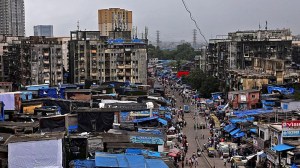Stay updated with the latest - Click here to follow us on Instagram
Amritsar Calling: A city of many brews, some elevating, some heady
Amritsaris have made it big with the humble tea leaf. These select families perfected the blending tech, the craft of mixing the expensive fragrant Darjeeling ones with the robust Assamica blacks and throwing in some of the lesser ones to improve the economy of the trade.
 Tea is the ice breaker for us, the conversation maker, the very basic tool of hospitality.
Tea is the ice breaker for us, the conversation maker, the very basic tool of hospitality. The city has had a strange habit of marking families by the nomenclature of their trade. All our lives we have heard of and met people who were branded so. Chawal-walas, the rice millers, who later shortened their branding to the surname Chawla; Ghorian-wale, those who traded in horses; Lohe-wale, the iron merchants; Chaa-wale, the tea traders and even Tuttian-wale, those who make water taps. Of course, let’s not forget our good friends the dodhis, this one sticks for a lifetime to our dairy farmers and the milk processors. But today we brew our tales, so we begin with the chaa-wale, blenders and traders of the brew that makes our morning with a little help from the dhodhis of town.
Amritsaris have made it big with the humble tea leaf. These select families perfected the blending tech, the craft of mixing the expensive fragrant Darjeeling ones with the robust Assamica blacks and throwing in some of the lesser ones to improve the economy of the trade. To keep the balance of taste year after year is a science in itself as the climate, the pests, and the other vagaries of nature really determine the performance of a plantation and thus its crop every season. The local traders were quick to grab the opportunity a long time ago from the British and spruced up their act to become merchants and commission agents, getting raw teas from Kangra and Dehradoon and later the lush gardens of Assam and West Bengal. One well-known family was even awarded the ‘Khattab’ of Raja Singh, a title if you may, by the East India Company representatives, so all the offshoots and the progeny of the Mehras in the trade had businesses with names that began with Raja Singh. And the Kapoors as well, those of Messers Nand Lal Hira Lal fame, who claim to have been one of the pioneers in processing green teas of Assam in the 1930s.
But the grading to satisfaction of the goras themselves and the stronger tones for the locals was the proficiency of firms such as Atma Singh Tarlochan Singh, retailers and merchandisers, a stone’s throw from the Golden Temple. It is perhaps one of the oldest trading establishments dating back to the early 1900s which has sustained to this day. They mastered learning the CTCs (Crush, Tear, Curl) of robust quick steeping black teas, and the orthodoxy of the layered fragrances and lighter tones. They were amongst the few forerunners of the art of blending and branding greens as well.
The tea mandi
It is said that the city even today is the biggest mandi for green teas, servicing the entire area of erstwhile Punjab including the Haryana belt and the cooler climes of Himachal and the Kashmir valley. These are the people who define the consistency, the wholesome bouquet, and the strength of the brew, be it the gorgeous Kashmiri Kahvahs, the finer greens or the robust blacks. To imagine that real tea is basically the leaf of a plant from a common strain, Camellia Sinensis, and yet the exquisite variations of weather, altitude, cultivating and processing practices that have from time set apart the Dehradooni and the Kangra plantations from the Assamese and the Bengali ones. And then of course the masters and the tea tasters who blend and package to cater to preferences and the sustainability of brands. The other teas are of course fashionably called teas since they are infusions of spices, fruit, or flowers and thus suitable for a purpose or a fad.
My father was an avid tea drinker and insisted that his tea was not a murdered decoction but a sensible infusion, a brew derived with care and served in style. He would scout the Bajaj stores and the Novelty’s of town looking for his favoured brew, a mix of Lipton Green with Lopchu Orange Pekoe usually. As kids we would be awakened by the wafting fragrance of these brews, and despite mum’s frown, get half a cup and thus were enlightened to tea tasting experiences. The chai had to be served well. So, every morning, a silver tray with matching tea ketli, the milk pot and sugar dispenser, all shining perfectly, and the Noritake – Oops scratch that, since that is my wife’s forte – dainty Hitkari cups and saucers, would be the norm as bed tea and at the breakfast table.
Tea is the ice breaker for us, the conversation maker, the very basic tool of hospitality. And if accompanied by the attey de biscuit or butter toast can actually get some of your work done without much sifarish or grease. All in all, it makes for an amiable relationship and raises the bar of affability quite remarkably. Otherwise, be sure to hear about tales behind your back as the grapevines buzz with negative rumours about your lack of social etiquette – “Oh koi banda thora hai, kamm udaah swah karna eh, hor taan chaad, chaa vi nee puchhdah.”
So apart from the ample tea hospitality in homes and offices, the tea stalls of the city cater to customers by the thousands each day. Lined benches and plastic chairs, cups of hot tea and conversations, as biscuits are dipped into glasses of chai for the magic that ensues. And of course, the reaction when the butter toast is dunked as well and the flavour turns Punjabi, “Ajj chaa da swaad hi kujj hor hai.” Balle Balle to that.
Where Bacchus beckons
As one steps out of sanctified confines of Amritsar Androon, the walled city, and “keep walking” into the extended newer city, the brew tends to stray into more intoxicating zones. Not that the tastes and preferences do not mingle, but it’s the availability of things. Alcoholic beverages, the meats, and tobacco are forbidden to be traded in the interior, so spirits soar elsewhere across the railway lines, and beyond the walls, where Bacchus roams free.
There is perhaps no place on Earth where capacities of the mind, body and soul soar as does here. Villages that brew are commonplace. Everyone knows of them. The nefarious elicit distilleries vapourising heady fluids, some that hit hard and others that kill. These potent brews are hidden along canal banks and drains, in fields and marshes, and these torchbearers of highs are even sold in plastic sachets of convenience anywhere you go. No tax, no refrain, just urges fulfilled and inhibitions unleashed. A dear friend in fact was serving a variation of this desi spirit at an interesting evening just the other day. It was a rosé with a fair aroma of spices thrown, one was told by the host with a sparkle in his eye. The crème de la crème of town tried out at least a sippa giggling at the potency and the bouquet of flavour it seemed to offer. As a conversation churner it was an absolute hit, way beyond the Glens that were savoured aplenty. It was a fine invigorating evening, made even more engaging as the spirits soared.
Even in town, the good brews are not hard to find. Amritsar has over two dozen bars on one main street of Ranjit Avenue itself, churning out wine and song, bouncers in attendance lest the young Punjab blood goes on the boil or egos go on horseback rides. For the private party animals there are high-class thekaas, boutique liquor stores if you will, rubbing shoulders with the common desi volume churners. A visitor who flew in from Dubai was fascinated by one which had scotches and malts, gins and vodkas, cabernets, and sauvignons to match the duty-free shops at any airport. This place is happening said he with delight.
Those who propose that just 10% of the brain’s potential is utilised scientifically speaking among human beings are in for a surprise here. Given the peg of choice, the Ambarsari becomes the bionic man, capable of enhancing his skills of brawn and brain to the hilt. A half hour into the evening everything be like No Problem. “Done ji done. Samjho ho gaya ji. Main betha haan na,” is just a beginning. The crash course in English language an hour into the evening is evident when the connect with colonial times flows from the loosened tongue. Much like the Ranjit Singh of the English TV show Mind your Language, no thousand apologies here though, just love and nostalgia overflowing.
My driver is a great tippler himself and as is the tradition, no guest can escape the call of these bitters. As soon as he gets a call from a relative or a friend, or one from his wife announcing that they have a guest, he asks me for a thousand rupees for playing a decent host, “Ghar paroney aye hann, aao bhagat te muh kaurah taan karvaana payegaa ji.” And so, an evening where a bottle is killed happens. He comes the next morning with a red swollen face, but a perpetual smile, indicators of a tipsy evening of bonhomie.
And this is a spirit ingrained in our psyche. Even an unannounced guest is welcome, the door of the Amritsari haveli, be it the old rural one or the modern urban one, is always open and the red carpet laid out instantly. Start with the chaa-paani, offer the lassi-shassi, and end with the chicken-shiken and the mooh kauraa, the bittersweet of the alcohol plunge.
Some of us are teetotallers, committed to the cause of a tempered society, as professed by Dicky Turner of Preston in 1833, and even inscribed on his gravestone to this day (Author of the word TEE-TOTAL). And the others follow the Arabian experiences of Al-Kuhl, which has a reference by the way to the eyeliners of the likes of Cleopatra, but that’s a story for another day.
The upwardly mobile and the new brand of tipplers stick to the heavier vodkas of things, the honchos talk about age matured kegs and casks as they sip their single malts, while their happening ladies of town savour their mojitos and the Margaritas. The no lesser souls make their tempered choices sticking to mocktails for effect and teas for comfort and pleasure. So, here’s to the city and its brews, the sober as well as the buoyant ones, and the fact that it excels on both fronts.
(Gunbir Singh is an Amritsar-based philanthropist, environmentalist and author who loves all things Ambarsari)






